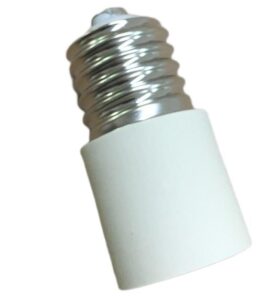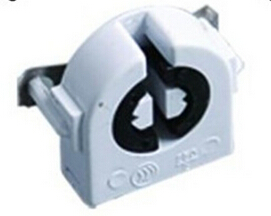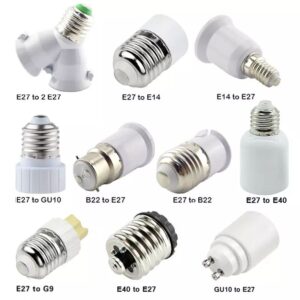One common problem in electrical work is incorrect wiring. Hooking a light bulb to the neutral wire can cause some major problems. From circuits that don’t work to potential shocks, you don’t want to mess around with this stuff!
If you connect a light bulb to the neutral wire without having it hooked up to a live wire, the circuit isn’t complete, and the light won’t come on. There are also some really serious electrical problems you can cause.
Now, we’ll take a look at how electrical circuits work, what happens when you connect a bulb incorrectly to a neutral wire, and how to fix it.

Understanding Electrical Circuits: How They Work
To fully grasp why connecting a light bulb only to the neutral wire can be problematic, it’s essential to understand how an electrical circuit operates. A basic circuit comprises two main wires: the live (or hot) wire and the neutral wire.
The live wire carries electrical current from the power source to the device (in this case, the light bulb). The neutral wire serves as the return path for the current, allowing electricity to flow back to the power source and complete the circuit. In a functioning setup, current flows from the live wire, through the bulb, and returns through the neutral wire.
Without a proper connection to both wires, the circuit remains open and incomplete. This prevents the electrical current from powering the light bulb. Essentially, both wires must be properly connected to the light bulb for it to function as expected.
What Happens if a Light Bulb is Connected to the Neutral Wire Only?
If a light bulb is connected only to the neutral wire, the circuit remains incomplete because there is no live current entering the bulb. Without the live wire providing the necessary electrical flow, the light bulb will not illuminate.
In this scenario, the neutral wire alone cannot carry electricity to power the bulb since its function is solely to return current to the power source. As a result, the light will stay off, and no electrical power will reach the bulb. Essentially, the bulb is connected, but the flow of electricity required to light it up is missing.
This improper connection doesn’t just prevent the bulb from working; it can also introduce potential hazards, which we will discuss further.

Electrical Hazards of Incorrect Wiring
Connecting a light bulb improperly—whether to the neutral wire alone or mixing up the live and neutral wires—can lead to significant safety risks. One of the most critical concerns is the risk of electric shock.
Live wires carry a voltage that can cause serious injury if touched. In contrast, the neutral wire typically carries little to no voltage under normal conditions. However, incorrect wiring can expose you to shock hazards, especially if you mistakenly touch the live wire while assuming it’s safe.
Additionally, short circuits are another potential danger of improper wiring. If wires are connected in ways that allow live and neutral wires to touch or interact without proper insulation, they can cause a short circuit. This may result in overheating, sparks, or even electrical fires, posing a serious risk to your property and personal safety.
Ensuring proper wiring not only helps your light bulb function as intended but also keeps your home safe from potential electrical disasters.
How to Identify Wiring Issues
Identifying whether a light bulb has been incorrectly connected to the neutral wire requires careful inspection of the wiring. Fortunately, there are tools and techniques you can use to troubleshoot these issues effectively.
A voltage tester is one of the most essential tools for this task. To use it, turn off the power at the circuit breaker and then remove the light fixture from its mount. Test each wire to determine whether it carries electrical current. The live wire should show a voltage reading, while the neutral wire should not. If only the neutral wire is connected to the light bulb, the tester will not detect voltage at the fixture.
When checking the connections, ensure the live wire is properly attached to the correct terminal on the light socket. Misconnections are often the result of simple mistakes, but they can have serious consequences. By carefully inspecting and testing your wiring, you can catch these errors before they cause further problems.

How to Fix a Light Bulb Connected to the Neutral Wire
Fixing a light bulb that has been connected to the neutral wire instead of the live wire requires correcting the wiring setup. Here’s a step-by-step process to ensure everything is properly connected:
- Turn Off the Power: Before you begin any electrical work, switch off the circuit breaker to ensure no electricity is flowing to the fixture. Use a voltage tester to confirm that the power is off.
- Inspect the Wiring: Remove the light fixture carefully to expose the wiring. Look for any signs that the live and neutral wires are incorrectly connected. The live wire should be attached to the hot terminal of the light bulb socket, and the neutral wire should be connected to the neutral terminal.
- Rewire the Fixture: If the connections are wrong, disconnect the wires and reattach them to the correct terminals. The live wire should be connected to the socket terminal marked for the hot wire, and the neutral wire should be connected to the neutral terminal. Double-check your work to ensure everything is securely fastened.
- Test the Fixture: After reconnecting the wires, turn the power back on at the circuit breaker and test the light fixture. If the wiring is correct, the light bulb should illuminate properly when switched on.
- Call a Professional (if needed): If you’re unsure about any part of the process or if the issue persists after rewiring, it’s best to call a licensed electrician. They can safely assess the situation and fix the problem without the risk of injury or further electrical issues.
The Importance of Hiring a Professional Electrician
While some wiring tasks can be handled by knowledgeable homeowners, many electrical issues require the expertise of a professional electrician. When dealing with incorrect wiring or complex electrical setups, it’s crucial to ensure that all connections are made safely and to code.
Electricians are trained to identify potential hazards and address them before they become serious problems. If you’re dealing with an older electrical system, or if you don’t feel confident in your ability to fix wiring issues, a professional can save you time, stress, and potential accidents. Hiring a licensed electrician is particularly important when working on fixtures that involve high voltages or complex circuitry.
In addition to preventing dangerous situations, a professional can help ensure that your electrical system is functioning at optimal efficiency, reducing the risk of future issues like short circuits or power surges.

Final Words
Connecting a light bulb to the neutral wire without having it connected to a live wire will keep the circuit from being complete, and your light won’t work. Even worse, you can cause some major electrical problems, including shocks and fires. Understanding the basics of how electrical circuits work and making sure your fixtures are wired correctly can help you avoid these problems.
If you run into a wiring problem that seems too complicated or unsafe for you to handle, make sure to get someone to help you. You don’t want to mess around with this stuff. You want to have your wiring right so that everything works, and you don’t kill yourself.













